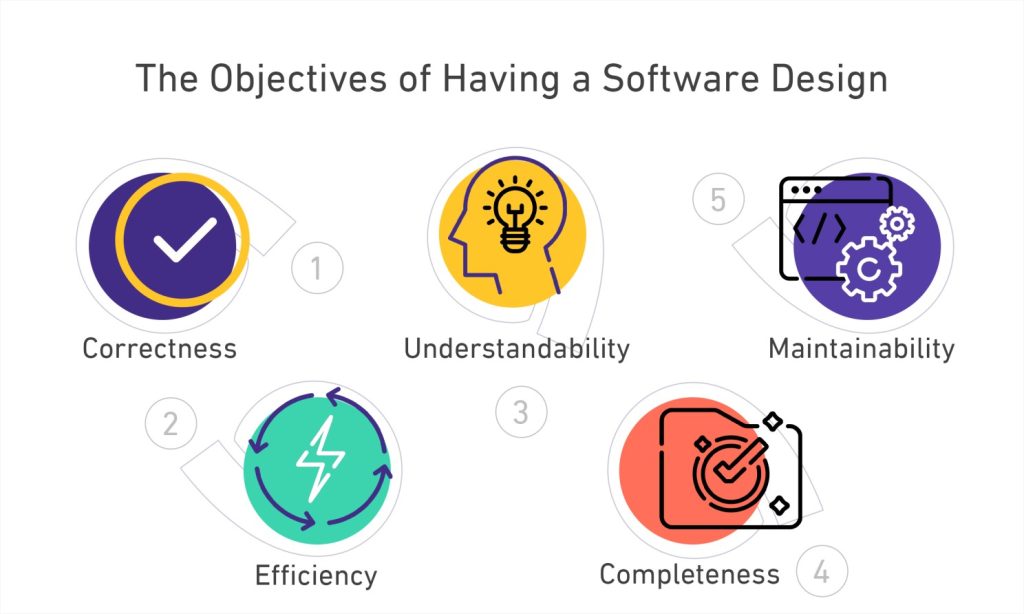Imagine a developer diving into a new project, eager to write code and see results. It’s tempting to skip the planning phase and jump straight into scripting, but this approach is like building a house without a foundation. The structure may stand temporarily, but it’s bound to crumble under pressure. Software design is the blueprint that ensures your project is robust, scalable, and maintainable. As a developer, why should you invest time in learning software design? And is it worth the effort? Let’s explore the process, objectives, and undeniable benefits of software design to answer these questions.
What is Software Design?
Software design is the process of defining the structure, components, and interactions of a software system before writing a single line of code. It’s the roadmap that guides developers from concept to execution, ensuring the final product meets functional and performance requirements. The process is typically divided into three key phases:
1. Architectural Design
This phase lays the groundwork for the software’s structure. It defines how different components—like databases, user interfaces, and APIs—will interconnect to deliver the desired functionality. Think of it as sketching the layout of a building, ensuring every room serves a purpose and connects seamlessly.
2. High-Level Design
Here, the focus shifts to creating a modular structure. Designers break the system into smaller, manageable entities (modules) and define how they interact to achieve optimal results. This phase ensures the software’s theoretical concepts align with practical implementation, balancing efficiency and functionality.
3. Detailed Design
The final phase involves refining each module’s functionality. Developers compile all modular outputs, arranging or rearranging them to produce the final product. This step ensures every component—from data structures to external interfaces—is polished and ready for coding.
Why Learn Software Design? The Core Objectives
Learning software design isn’t just about following a process; it’s about achieving specific goals that elevate the quality of your work. Here are the primary objectives of software design:
-
Correctness: A well-designed system incorporates all required functionalities, ensuring the software performs as intended.
-
Efficiency: Good design optimizes resources, reduces costs, and minimizes development time without compromising quality.
-
Understandability: A clear, layered design makes it easy for developers to grasp the system’s structure, even if they’re new to the project.
-
Completeness: A thorough design includes every necessary component, from data structures to external interfaces, leaving no gaps.
-
Maintainability: Flexible designs allow developers to adapt the software to changing requirements with minimal effort.
By mastering software design, developers can create systems that are not only functional but also sustainable and user-friendly.

The Importance of Software Design: Why It Matters
Software design is the backbone of any successful development project. Without it, even the most skilled coders risk creating chaotic, error-prone systems. Here’s why software design is non-negotiable:
1. Modularity for Flexibility
Software design breaks projects into smaller, independent modules. This modularity allows developers to tackle complex tasks one piece at a time. If a client requests changes—say, adding a new feature—you can modify a specific module without overhauling the entire system. This saves time, reduces stress, and keeps projects on track.
2. Maintainability for Long-Term Success
A well-designed system is easy to maintain. Whether you’re fixing bugs, updating features, or redesigning the user interface, software design lets you work on individual modules without disrupting the whole application. This maintainability is crucial for projects that evolve over time, ensuring they remain relevant and functional.
3. Quality Performance Through Error Tracking
Good design simplifies error detection and resolution. By organizing code into clear, logical modules, developers can pinpoint issues quickly. If a project is handed to a new developer, they can review the design documentation to understand the system’s structure and maintain its quality. This transparency boosts collaboration and ensures consistent performance.
4. Portability for Versatility
Portability is a hallmark of great software design. It allows developers to transfer functions between modules or adapt the software for different platforms. For example, a feature built for a web app can be repurposed for a mobile version with minimal rework. This versatility enhances the software’s value and reach.
5. Traceability for Ease of Use
An excellent design provides traceability, making it easier to navigate and maintain the application. Traceability ensures every component is documented and linked to its purpose, so developers can follow the system’s logic without getting lost. This is especially valuable for large-scale projects with multiple contributors.
Is Software Design Worth It?
Absolutely. While it may seem like an extra step, software design saves time, reduces costs, and improves outcomes in the long run. Without a solid design, developers risk creating systems that are difficult to maintain, prone to errors, and resistant to change. By contrast, a well-designed system is like a well-built house: it stands the test of time, adapts to new needs, and provides a reliable foundation for growth.
For developers, learning software design is an investment in skill and efficiency. It equips you to handle complex projects with confidence, collaborate effectively with teams, and deliver high-quality software that delights clients and users. Plus, in a competitive industry, expertise in software design sets you apart as a thoughtful, strategic professional.
Final Thoughts: Embrace Software Design and Thrive
If you’re passionate about coding, software design is your secret weapon. It transforms chaotic projects into streamlined successes, empowering you to build software that’s functional, flexible, and future-proof. Whether you’re a solo developer or part of a team, mastering software design will elevate your work and open doors to exciting opportunities.
Ready to take your skills to the next level? Join a community of innovators and work on cutting-edge technology projects that push boundaries. With software design in your toolkit, there’s no limit to what you can achieve.




0 Comments